- Home
- Walter Scott
Marmion Page 2
Marmion Read online
Page 2
‘Groom fought like noble, squire like knight,
As fearlessly and well.’
Scott intended to work slowly and carefully through his new poem, but, as he explains in the 1830 Introduction, circumstances interrupted his design. ‘Particular passages,’ he says, ‘of a poem, which was finally called “Marmion,” were laboured with a good deal of care, by one by whom much care was seldom bestowed.’ The publication, however, was hastened by ‘the misfortunes of a near relation and friend.’ Lockhart (Life, ii. 115) explains that the reference is to ‘his brother Thomas’s final withdrawal from the profession of Writer to the Signet, which arrangement seems to have been quite necessary towards the end of 1806.’ At any rate, the poem was finished in a shorter time than had been at first intended. The subject suited Scott so exactly that, even in default of a special stimulus, there need be no surprise at the rapidity of his composition after he had fairly begun to move forward with it. Dryden, it may be remembered, was so held and fascinated by his ‘Alexander’s Feast’ that he wrote it off in a night. Cowper had a similar experience with ‘John Gilpin,’ and Burns’s powerful dramatic tale, ‘Tam O’Shanter,’ was produced with great ease and rapidity. De Quincey records that, in his own case, his very best work was frequently done when he was writing against time. Scott’s energy and fluency of composition are clearly indicated in the following passage in Lockharts Life, ii. 117:―
‘When the theme was of a more stirring order, he enjoyed pursuing it over brake and fell at the full speed of his Lieutenant. I well remember his saying, as I rode with him across the hills from Ashestiel to Newark one day in his declining years―“Oh, man, I had many a grand gallop among these braes when I was thinking of ‘Marmion,’ but a trotting canny pony must serve me now.” His friend, Mr. Skene, however, informs me that many of the more energetic descriptions, and particularly that of the battle of Flodden, were struck out while he was in quarters again with his cavalry, in the autumn of 1807. “In the intervals of drilling,” he says, “Scott used to delight in walking his powerful black steed up and down by himself upon the Portobello sands, within the beating of the surge; and now and then you would see him plunge in his spurs and go off as if at the charge, with the spray dashing about him. As we rode back to Musselburgh, he often came and placed himself beside me to repeat the verses that he had been composing during these pauses of our exercise.”‘
This is wholly in keeping with the production of such poetry of movement as that of ‘Marmion,’ and it deserves its due place in estimating the work of Scott, just as Wordsworth’s staid and sober walks around his garden, or among the hills by which he was surrounded, are carefully considered in connexion with his deliberate, meditative verse. Scott wrote the Introduction to Canto IV just a year after he had begun the poem, and between that time and the middle of February 1808 the work was finished. There is no rashness in saying that rapidity of production did not detract from excellence of result. Indeed, it is admiration rather than criticism that is challenged by the reflection that, in these short months, the poet should have turned out so much verse of high and enduring quality.
III. CHARACTERISTICS OF THE POEM.
‘Marmion’ is avowedly a descriptive poem. It is a series of skilful and impressive pictures, not only remarkable in themselves, but conspicuous in their own kind in poetical literature. Scott is said to have been deficient, or at any rate imperfectly trained, in certain sense activities, but there is no denying his quick perception of colour and his strong sense of the leading points in a landscape. Even minute features are seized and utilized with ease and precision, while the larger elements of a scene are depicted with breadth, sense of proportion, and clearness and impressiveness of arrangement. This holds true whether the description is merely a vivid presentment of what the imagination of the poet calls from the remote past, or a delineation of what has actually come under his notice. Norham at twilight, with the solitary warder on the battlements, and Crichtoun castle, as Scott himself saw it, instantly commend themselves by their realistic vigour and their consistent verisimilitude. Any visitor to Norham will still be able to imagine the stir and the imposing spectacle described in the opening stanzas of the first canto; and it is a pleasure to follow Scott’s minute and faithful picture of Crichtoun by examining the imposing ruin as it stands at the present day. Then it is impossible not to feel that the Edinburgh of the sixteenth century was exactly as it is depicted in the poem, and that the troops on the Borough Moor were disposed as seen by the trained military eye of Sir Walter Scott. It would be difficult to find anywhere a more striking ancient stronghold than Tantallon, nor would it be easy to conceive a more appropriate scene for that grim and exciting morning interview in which the venerable Douglas found that he had harboured a recreant knight. Above all, there is the great battle scene, standing alone in literature for its carefully detailed delineation―its persistent minuteness, its rapidity of movement, its balanced effects, its energetic purpose―and surpassing everything in modern verse for its vivid Homeric realism. Fifteen years before, as we have seen, Scott had the progress of the battle in his mind’s eye, and at length he produced his description as if he had been present in the character of a skilful and interested spectator. There are envious people who decline to admit that Scott discovered his scenery, and who contend that others knew all about it before and appreciated it in their own way. Be it so; and yet the fact remains that Scott likewise saw and appreciated in the way peculiar to him, and thereby enabled his numerous readers to share his enjoyment. A very interesting and suggestive account of the new popularity given to the Flodden district by the publication of ‘Marmion’ will be found in Lockhart’s Life, iii. 12. In the autumn of 1812 Scott visited Rokeby, doing the journey on horseback, along with his eldest boy and girl on ponies. The following is an episode of the way:―
‘Halting at Flodden to expound the field of battle to his young folks, he found that “Marmion” had, as might have been expected, benefited the keeper of the public-house there very largely; and the village Boniface, overflowing with gratitude, expressed his anxiety to have a Scott’s Head for his sign-post. The poet demurred to this proposal, and assured mine host that nothing could be more appropriate than the portraiture of a foaming tankard, which already surmounted his doorway. “Why, the painter man has not made an ill job,” said the landlord, “but I would fain have something more connected with the book that has brought me so much good custom.” He produced a well-thumbed copy, and handing it to the author, begged he would at least suggest a motto from the Tale of Flodden Field. Scott opened the book at the death-scene of the hero, and his eye was immediately caught by the “inscription” in black letter:―
“Drink, weary pilgrim, drink, and pray
For the kind soul of Sibyl Grey,” &c.
“Well, my friend,” said he, “what more would you have? You need but strike out one letter in the first of these lines, and make your painter-man, the next time he comes this way, print between the jolly tankard and your own name:―
‘Drink, weary pilgrim, drink, and PAY.’“
Scott was delighted to find, on his return, that this suggestion had been adopted, and for aught I know the romantic legend may still be visible.’
The characters in the poem are hardly less vigorous in conception and presentation than the descriptions. It may be true, as Carlyle asserts in his ungenerous essay on Scott, that he was inferior to Shakespeare in delineation of character, but, even admitting that, we shall still have ample room for approval and admiration of his work. So far as the purposes of the poem are concerned the various personages are admirably utilized. We come to know Marmion himself very intimately, the interest gradually deepening as the real character of the Palmer and his relations to the hero are steadily developed. These two take prominent rank with the imaginary characters of literature. James IV, that ‘champion of the dames,’ and likewise undoubted military leader, is faithfully delineated in accordance with historical records and con
temporary estimates. Those desirous of seeing him as he struck the imagination of a poet in his own day should read the eulogy passed upon him by Barclay in his ‘Ship of Fools.’ The passage in which this occurs is an interpolation in the division of the poem entitled ‘Of the Ruine and Decay of the Holy Faith Catholique.’ The other characters are all distinctly suited to the parts they have to perform. Acting on the licence sanctioned by Horatian authority:―
‘Atque ita mentitur, sic veris falsa remiscet,
Primo ne medium, medio ne discrepet imum’―
Scott appropriates Sir David Lyndsay to his purpose, presenting him, even as he presents the stately and venerable Angus, with faithful and striking picturesqueness. Bishop Douglas is exactly suited to his share in the development of events; and had room likewise been found for the Court poet Dunbar―author of James’s Epithalamium, the ‘Thrissill and the Rois’―it would have been both a fit and a seemly arrangement. Had Scott remembered that Dunbar was a favourite of Queen Margaret’s he might have introduced him into an interesting episode. The passage devoted to the Queen herself is exquisite and graceful, its restrained and effective pathos making a singularly direct and significant appeal. The other female characters are well conceived and sustained, while Constance in the Trial scene reaches an imposing height of dramatic intensity.
After the descriptions and the characterisation, the remaining important features of the poem are its marked practical irony and its episodes. Marmion, despite his many excellences, is throughout―and for obvious reasons―the victim of a persistent Nemesis. Scott is much interested in his hero; one fancies that if it were only possible he would in the end extend his favour to him, and grant him absolution; but his sense of artistic fitness prevails, and he will abate no jot of the painful ordeal to which he feels bound to submit him. Marmion is a knight with a claim to nothing more than the half of the proverbial qualifications. He is sans peur, but not sans reproche; and it is one expression of the practical irony that constantly lurks to assail him that even his fearlessness quails for a time before the Phantom Knight on Gifford Moor. The whole attitude of the Palmer is ironical; and, after the bitter parting with Angus at Tantallon, Marmion is weighted with the depressing reflection that numerous forces are conspiring against him, and with the knowledge that it is his old rival De Wilton that has thrown off the Palmer’s disguise and preceded him to the scene of war. In his last hour the practical irony of his position bears upon him with a concentration of keen and bitter thrusts. Clare, whom he intended to defraud, ministers to his last needs; he learns that Constance died a bitter death at Lindisfarne; and just when he recognises his greatest need of strength his life speedily ebbs away. There is a certain grandeur of impressive tragical effort in his last struggles, as he feels that whatever he may himself have been he suffers in the end from the merciless machinery of a false ecclesiastical system. The practical irony follows him even after his death, for it is a skilful stroke that leaves his neglected remains on the field of battle and places a nameless stranger in his stately tomb.
As regards the episodes, it may just be said in a word that they are appropriate, and instead of retarding the movement of the piece, as has sometimes been alleged, they serve to give it breadth and massiveness of effect. Of course, there will always be found those who think them too long, just as there are those whose narrowness of view constrains them to wish the Introductions away. If the poet’s conception of Marmion be fully considered, it will be seen that the Host’s Tale is an integral part of his purpose; and there is surely no need to defend either Sir David Lyndsay’s Tale or the weird display at the cross of Edinburgh. The episode of Lady Heron’s singing carries its own defence in itself, seeing that the song of ‘Lochinvar’ holds a place of distinction among lyrics expressive of poetical motion. After all, we must bear in mind that though it pleases Scott to speak of his tale as flowing on ‘wild as cloud, as stream, as gale,’ he was still conscious that he was engaged upon a poem, and that a poem is regulated by certain artistic laws. If we strive to grasp his meaning we shall not be specially inclined to carp at his method. It may at the same time be not unprofitable to look for a moment at some of the notable criticisms of the poem.
IV. CRITICISMS OF THE POEM.
When ‘Marmion’ was little more than begun Scott’s publishers offered him a thousand pounds for the copyright, and as this soon became known it naturally gave rise to varied comment. Lord Byron thought it sufficient to warrant a gratuitous attack on the author in his ‘English Bards and Scotch Reviewers.’ This is a portion of the passage:―
‘And think’st thou, Scott! by vain conceit perchance,
On public taste to foist thy stale romance.
Though Murray with his Miller may combine
To yield thy muse just half-a-crown per line?
No! when the sons of song descend to trade,
Their bays are sear, their former laurels fade.’
As a matter of fact, there was on Scott’s part no trade whatever in the case. If a publisher chose to secure in advance what he anticipated would be a profitable commodity, that was mainly the publisher’s affair, and the poet would have been a simpleton not to close with the offer if he liked it. Scott admirably disposes of Byron as follows in the 1830 Introduction:―
‘The publishers of the “Lay of the Last Minstrel,” emboldened by the success of that poem, willingly offered a thousand pounds for “Marmion.” The transaction being no secret, afforded Lord Byron, who was then at general war with all who blacked paper, an apology for including me in his satire, entitled “English Bards and Scotch Reviewers.” I never could conceive how an arrangement between an author and his publishers, if satisfactory to the persons concerned, could afford matter of censure to any third party. I had taken no unusual or ungenerous means of enhancing the value of my merchandise―I had never higgled a moment about the bargain, but accepted at once what I considered the handsome offer of my publishers. These gentlemen, at least, were not of opinion that they had been taken advantage of in the transaction, which indeed was one of their own framing; on the contrary, the sale of the Poem was so far beyond their expectation, as to induce them to supply the author’s cellars with what is always an acceptable present to a young Scottish housekeeper, namely, a hogshead of excellent claret.’
A second point on which Scott was attacked was the character of Marmion. It was held that such a knight as he undoubtedly was should have been incapable of forgery. Scott himself; of course, knew better than his critics whether or not this was the case, but, with his usual good nature and generous regard for the opinion of others, he admitted that perhaps he had committed an artistic blunder. Dr. Leyden, in particular, for whose judgment he had special respect, wrote him from India ‘a furious remonstrance on the subject.’ Fortunately, he made no attempt to change what he had written, his main reason being that ‘corrections, however in themselves judicious, have a bad effect after publication.’ He might have added that any modification of the hero’s guilt would have entirely altered the character of the poem, and might have ruined it altogether. He had never, apparently, gone into the question thoroughly after his first impressions of the type of knights existing in feudal times, for though he states that ‘similar instances were found, and might be quoted,’ he is inclined to admit that the attribution of forgery was a ‘gross defect.’ Readers interested in the subject will find by reference to Pike’s ‘History of Crime,’ i. 276, that Scott was perfectly justified in his assumption that a feudal knight was capable of forgery. Those who understand how intimate his knowledge was of the period with which he was dealing will, of course, be the readiest to believe him rather than his critics; but when he seems doubtful of himself, and ready to yield the point, it is well that the strength of his original position can thus be supported by the results of recent investigation.
Jeffrey, in the Edinburgh Review, not being able to understand and appreciate this new devotion to romance, and probably stimulated by his misreading o
f the reference to Fox in the Introduction to Canto I, did his utmost to cast discredit on ‘Marmion.’ Scott was too large a man to confound the separate spheres of Politics and Literature; whereas it was frequently the case with Jeffrey―as, indeed, it was to some extent with literary critics on the other side as well―to estimate an author’s work in reference to the party in the State to which he was known to belong. It was impossible to deny merits to Scott’s descriptions, and the extraordinary energy of the most striking portions of the Poem, but Jeffrey groaned over the inequalities he professed to discover, and lamented that the poet should waste his strength on the unprofitable effort to resuscitate an old-fashioned enthusiasm. They had been the best of friends previously―and Scott, as we have seen, worked for the Edinburgh Review―but it was now patent that the old literary intimacy could not pleasantly continue. Nor is it surprising that Scott should have felt that the Edinburgh Review had become too autocratic, and that he should have given a helping hand towards the establishing of the Quarterly Review, as a political and literary organ necessary to the balance of parties.
V. THE TEXT OF THE POEM.

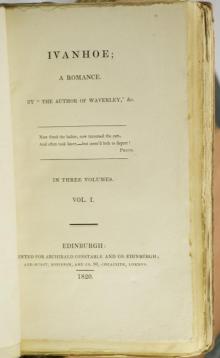 Ivanhoe: A Romance
Ivanhoe: A Romance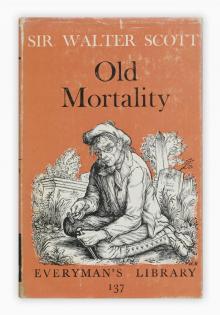 Old Mortality, Complete
Old Mortality, Complete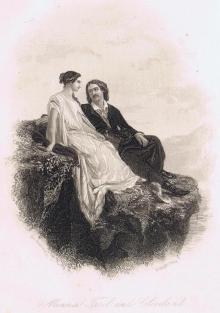 The Pirate
The Pirate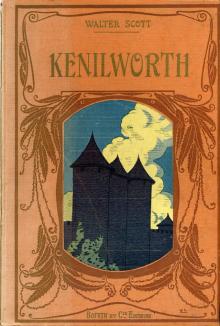 Kenilworth
Kenilworth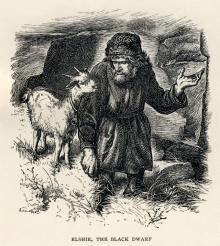 The Black Dwarf
The Black Dwarf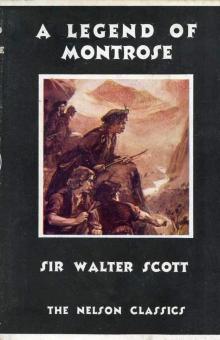 A Legend of Montrose
A Legend of Montrose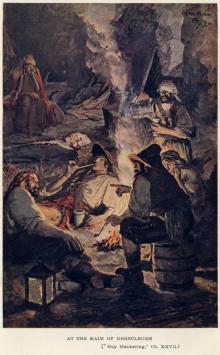 The Monastery
The Monastery The Bride of Lammermoor
The Bride of Lammermoor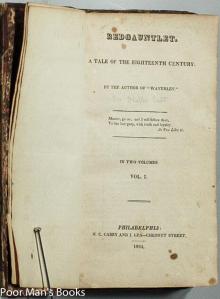 Redgauntlet: A Tale Of The Eighteenth Century
Redgauntlet: A Tale Of The Eighteenth Century St. Ronan's Well
St. Ronan's Well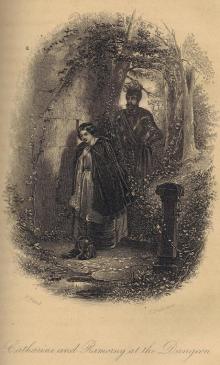 The Fair Maid of Perth; Or, St. Valentine's Day
The Fair Maid of Perth; Or, St. Valentine's Day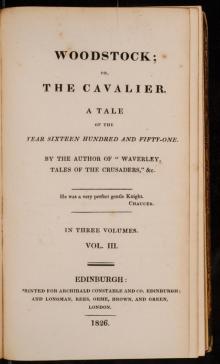 Woodstock; or, the Cavalier
Woodstock; or, the Cavalier_preview.jpg) Anne of Geierstein; Or, The Maiden of the Mist. Volume 1 (of 2)
Anne of Geierstein; Or, The Maiden of the Mist. Volume 1 (of 2)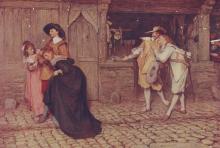 Peveril of the Peak
Peveril of the Peak Waverley; Or, 'Tis Sixty Years Since
Waverley; Or, 'Tis Sixty Years Since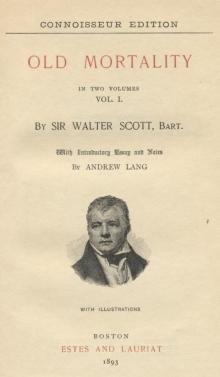 Old Mortality, Volume 1.
Old Mortality, Volume 1. Waverley Novels — Volume 12
Waverley Novels — Volume 12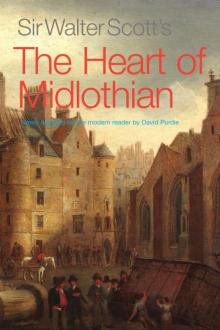 The Heart of Mid-Lothian, Complete
The Heart of Mid-Lothian, Complete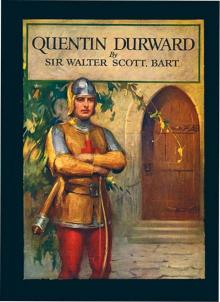 Quentin Durward
Quentin Durward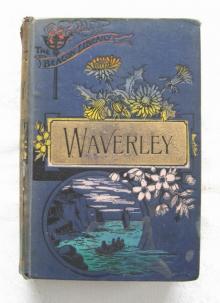 Waverley; Or 'Tis Sixty Years Since — Complete
Waverley; Or 'Tis Sixty Years Since — Complete Guy Mannering; or, The Astrologer — Complete
Guy Mannering; or, The Astrologer — Complete Rob Roy — Complete
Rob Roy — Complete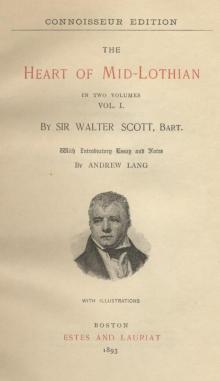 The Heart of Mid-Lothian, Volume 2
The Heart of Mid-Lothian, Volume 2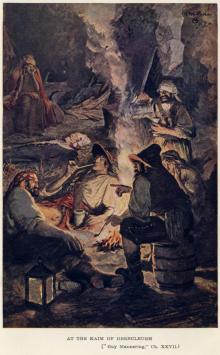 Guy Mannering, Or, the Astrologer — Complete
Guy Mannering, Or, the Astrologer — Complete_preview.jpg) Anne of Geierstein; Or, The Maiden of the Mist. Volume 2 (of 2)
Anne of Geierstein; Or, The Maiden of the Mist. Volume 2 (of 2)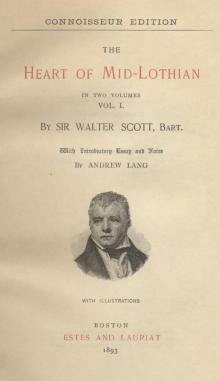 The Heart of Mid-Lothian, Volume 1
The Heart of Mid-Lothian, Volume 1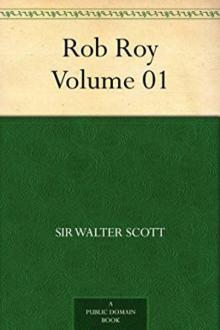 Rob Roy — Volume 01
Rob Roy — Volume 01 Waverley; Or, 'Tis Sixty Years Since — Volume 2
Waverley; Or, 'Tis Sixty Years Since — Volume 2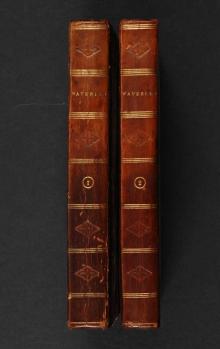 Waverley; Or, 'Tis Sixty Years Since — Volume 1
Waverley; Or, 'Tis Sixty Years Since — Volume 1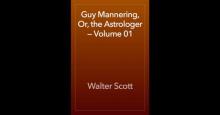 Guy Mannering, Or, the Astrologer — Volume 01
Guy Mannering, Or, the Astrologer — Volume 01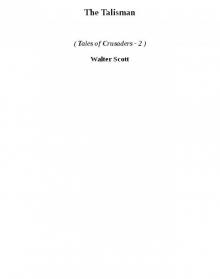 The Talisman toc-2
The Talisman toc-2 Rob Roy
Rob Roy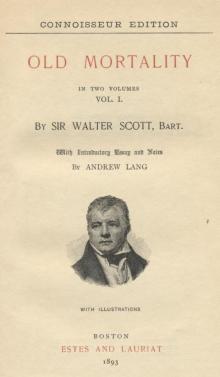 Old Mortality, Volume 2.
Old Mortality, Volume 2. The Betrothed
The Betrothed Waverley
Waverley The Surgeon's Daughter
The Surgeon's Daughter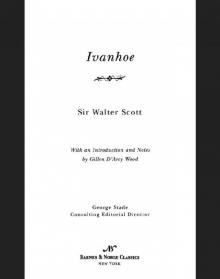 Ivanhoe (Barnes & Noble Classics Series)
Ivanhoe (Barnes & Noble Classics Series) The Antiquary
The Antiquary Letters on Demonology and Witchcraft
Letters on Demonology and Witchcraft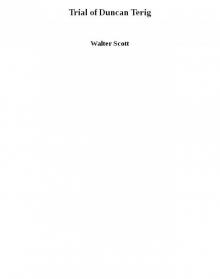 Trial of Duncan Terig
Trial of Duncan Terig Redgauntlet
Redgauntlet My Aunt Margaret's Mirror
My Aunt Margaret's Mirror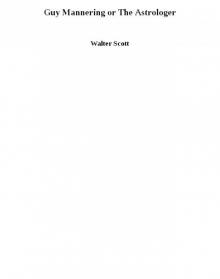 Guy Mannering or The Astrologer
Guy Mannering or The Astrologer Marmion
Marmion The Tapestried Chamber, and Death of the Laird's Jock
The Tapestried Chamber, and Death of the Laird's Jock Chronicles of the Canongate
Chronicles of the Canongate The Fair Maid of Perth or St. Valentine's Day
The Fair Maid of Perth or St. Valentine's Day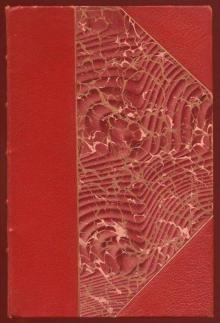 The Heart of Mid-Lothian
The Heart of Mid-Lothian Lady of the Lake
Lady of the Lake